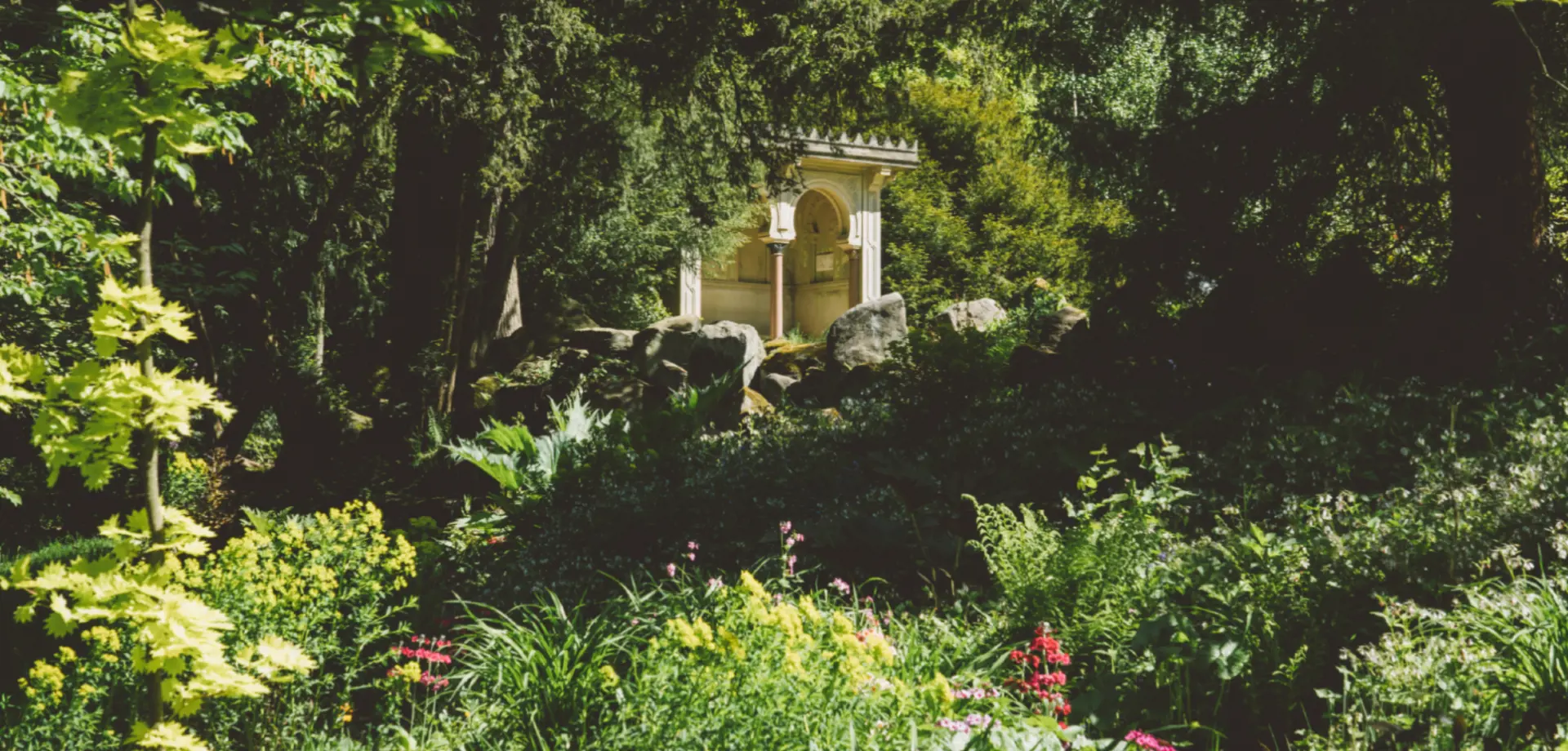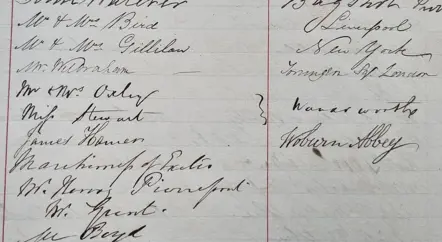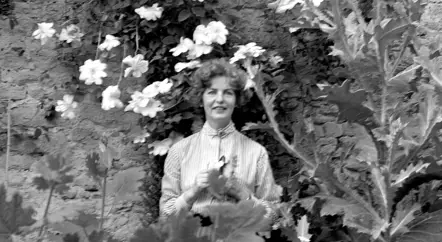Originally designed by Joseph Paxton to bring water from the eastern moors, the Trout Stream winds its way through the upper reaches of the garden and, enlivened by ongoing development since 2015, is a place to find a moment of sheer beauty and calm this time of year. Having once more awoken from its winter slumber, the naturalistic planting designed by Dan Pearson is establishing well and beginning to feel like it’s always been here. Around the Summer House there is a carpet of Iberian comfrey with accents of colour from magnolia, viburnum, cherry blossom, golden leaved philadelphus and the striking red of a Rhododendron barbatum hybrid, subtly under-planted with the delicate pink heart-shaped leaves of epimedium. Further along behind the Cascade House, the soft yellow hues of cowslips nestle in droves among the grassy banks: cuckoo flowers raise their heads, and the sunny faces of kingcups congregate at the water’s edge.
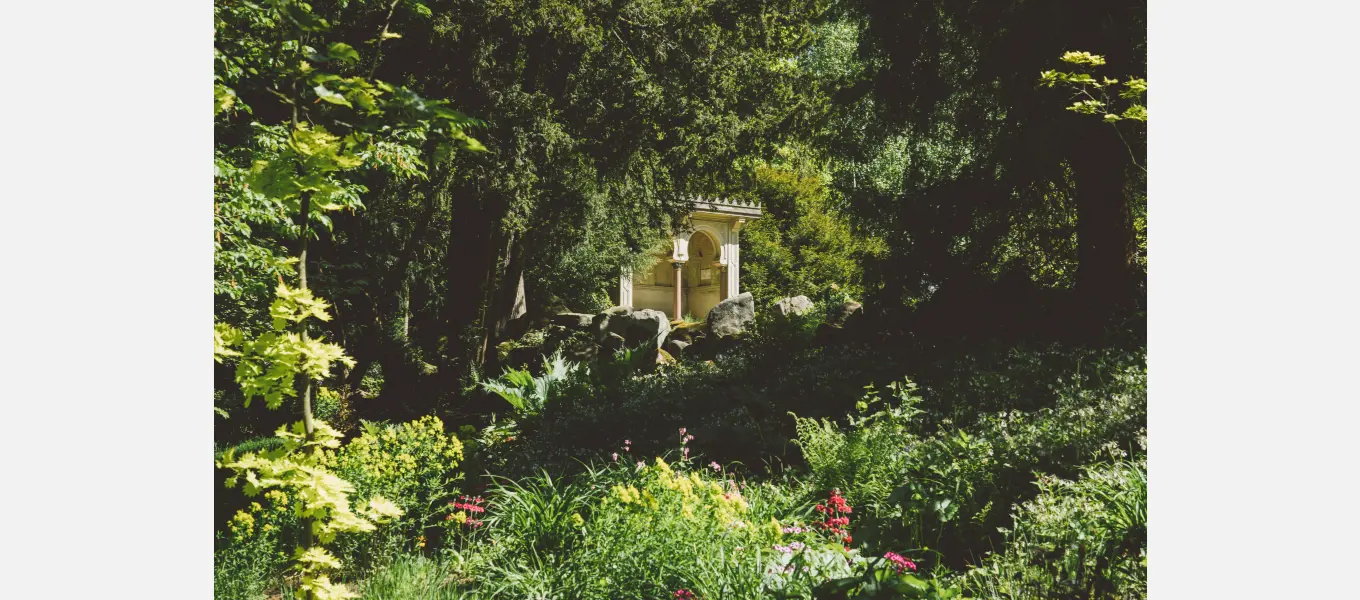
In the Kitchen and Cutting Garden, strawberries are starting to ripen, tomatoes and melons are romping away, spears of asparagus are bursting out of the soil and potatoes are being buried, earthed up to encourage their tubers to form. The scent of lilac and lily is in the air, globes of purple allium heads sway in the wind, Icelandic poppies shelter in the glasshouses and peonies and bearded irises are beginning to flower.
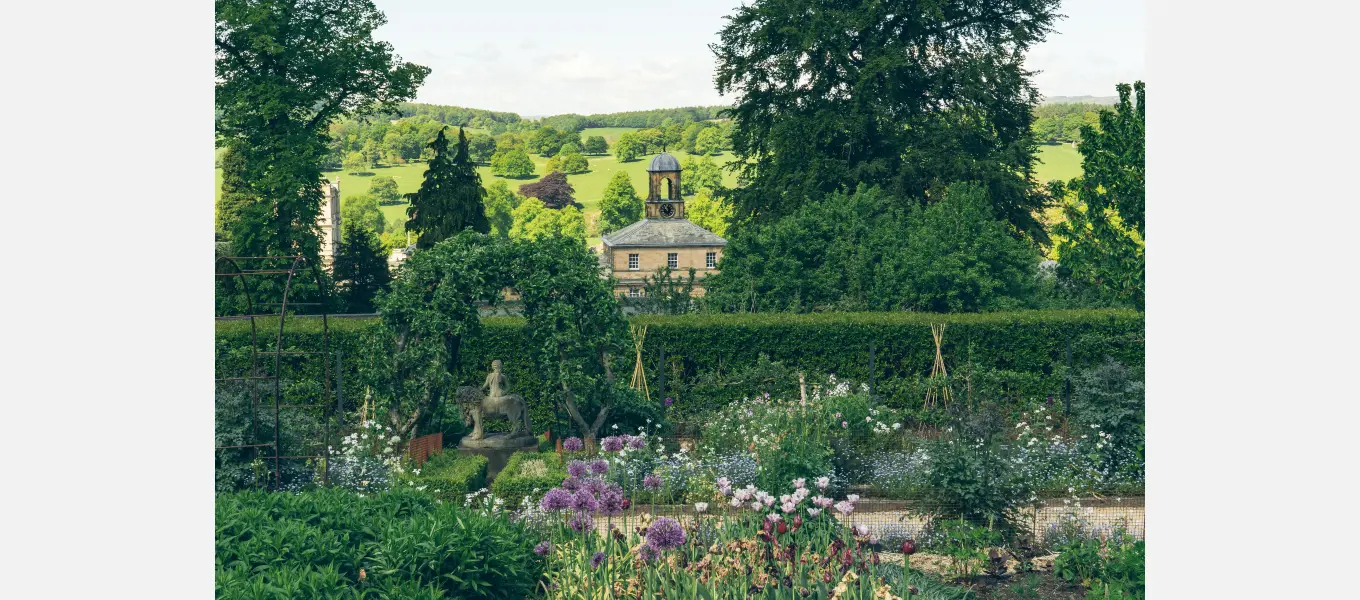
Our garden team have been busy working towards the completion of the spring planting, adding over 50,000 plants since February. We're now looking to begin the planting of our summer bedding, which this year will feature Surfinia Petunias, Diasicia and Calibrachoa. The tropical borders will also be planted with a range of tender perennials including over 200 dahlias.
We recently re-potted our two new Victoria amazonica plants. Of those sown in March, two seeds germinated and were potted up into a loam-based compost that was then submerged in the pond in the Display Greenhouse for six weeks. Now that these have begun to grow roots, they have been planted in the lily baskets in the tropical section of the Display Greenhouse.
Native to the shallow waters of the Amazon basin, Victoria amazonica is the largest of the Nymphaeaceae family of water lilies in the world. As these distinctive plants mature, they develop enormous, round leaves which float on the water’s surface, each reaching up to three metres in diameter.
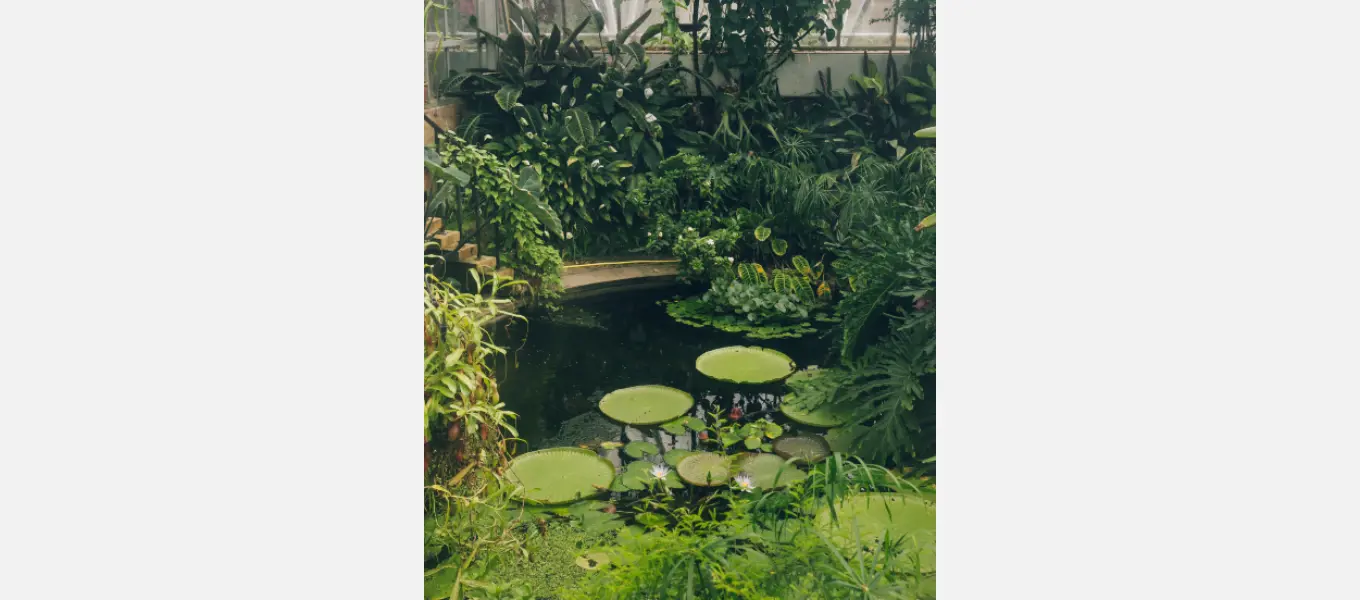
The flowers take up to 48 hours to fully bloom and in the wild are pollinated by beetles. Starting white, female and smelling of pineapple, they entice pollinators inside their mass of petals, and at daybreak the flower closes, trapping the beetles. Later that evening the flower begins to reopen, but through a series of chemical processes has changed colour to pink, sex to male and has lost its fruity perfume. The beetles, released from their kidnap, leave covered in pollen and fly off to find a new pineapple-scented female to nestle amongst.
The first seedlings of Victoria amazonica to be grown in England were housed at Kew Gardens in the mid-1840s; unfortunately they failed to flower and consequently didn’t produce any seed. As a highly reputed gardener, Joseph Paxton was asked to bring a plant to Chatsworth to see if he could be more successful. By 1849 he’d built a glasshouse which closely resembled the lilies native growing conditions; it had a heated pool and carefully placed water wheels which kept the water moving as it would naturally do in the Amazon. In this environment the lily plant flourished, causing great excitement in the world of horticulture. You can get an idea of what Paxton’s original lily pond was like by standing on Snake Terrace; the circle of coping stones that surround the serpent are the originals from the lily house that once stood at Barbrook.
At the moment our Amazonian giants are just six inches in diameter, but we’re happy to report they’re growing well and will hopefully be bearing their intriguing flowers in July.

